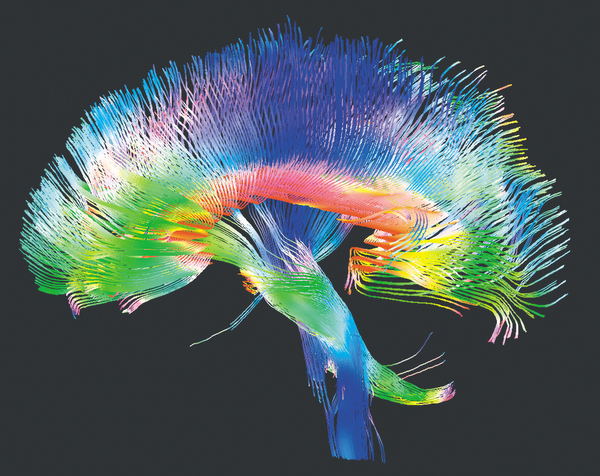
by yumintanlive | Sep 25, 2019 | Meditation, Psychology & Mental Health
I remember my friend asking me this when we were chatting one day, “Meditation? You mean we can solve problems by just sitting down?”. Then I just smiled because it is not something that can be explained in such simple terms. My friend’s question has also reflected a misunderstanding that the majority of people have towards meditation.
There are many kinds of meditation, and you don’t always have to be sitting down. Meditation is a way of managing our thoughts. When we are practicing meditation, we might appear not to be doing anything, but certain parts of our brain are actually already undergoing changes because of our meditation. The way we think, perceive and feel will also change accordingly.
Meditation is already being widely used in psychiatric treatment in the US, especially for mental illnesses caused by trauma, with the most commonly known illness being post-traumatic stress disorder (PTSD). Meditation has also proven to be very effective in treating anxiety, depression, addiction, obsessive compulsive disorders, as well as anger management.
American Veterans (AMVETS) began to introduce the practice of meditation as part of their trauma therapy for war veterans over the last few years. Many research results have shown that meditation has substantially reduced a variety of PTSD-related symptoms. Some of the major trauma treatment research centers in the US have also begun to provide trauma-related meditation training programs for psychiatrists so that they can offer more alternatives for patients.

What is Meditation?
Meditation is a method of managing and training our thoughts. We can classify meditation into two major categories based on the difference in their points of focus:
The first category is Focus Attention Meditation. The practitioner would focus his attention on a single object, such as breathing, chanting, frame of mind, a particular part of his body etc. For example, the meditation as part of Kundalini yoga belongs to this category. As the practitioner improves over time, his concentration will become more focused and stable, and won’t get distracted easily.
The second category is Open Monitoring Meditation. The practitioner will observe his surrounding environment and his own self (thoughts, feelings, memories etc.) with an open mind, without being judgmental or inflexible. The aim of this is to help the practitioner achieve a state of total emptiness, so that he won’t easily fall into any instinctive or habitual responses. The commonly known practice of mindfulness belongs to this category.
The Use of Meditation in Trauma Recovery
Bruce Perry, a psychiatrist, breaks up the human brain into four levels according to the time sequence in which the brain develops and the complexity of the brain’s functions, namely brain stem, diencephalon, limbic system, and frontal cortex.
The brain stem is at the lowest level and the frontal cortex is at the highest level. The lowest level with the simplest structure regulates our basic skills and is developed first. The highest level with the most complex structure regulates the more complex functions and is developed at a later stage. Since the brain stem is responsible for regulating our breathing, heartbeat, blood pressure, as well as controlling our body’s automatic survival function, it is developed the earliest. The frontal cortex controls our high-level functions such as logic, language, risk assessment and concentration, it is only fully developed at around the age of 20.
In my article “Understanding Brain Structure Through Trauma”, I mentioned that “the smooth operation of the brain stem is extremely important for the development of the frontal cortex”. Since the brain stem of people with PTSD is already seriously damaged, talk therapy will only have limited effectiveness because their brain is mainly focused on survival rather than logic.
According to Bruce Perry, it is possible to cure and strengthen the function of the brain stem through providing repetitive and pattern activities.Such repetitive and pattern somatosensory activities include dancing, breathing, meditation, yoga etc. These activities can greatly reduce anxiety, impulsiveness and other trauma-related symptoms.
Furthermore, research has shown that there was an obvious reduction in the volume of brain cells in the amygdala for a normal person who continuously practiced meditation for eight weeks, therefore his fear, stress and anxiety have also eased substantially. The thickness of his hippocampus cortex will increase, so his learning ability, memory and creativity will also improve accordingly. Meditation can change the way we think, our perceptions and feelings through changing our brain’s structure, thereby improving our mental health. So even if you don’t have trauma-related or other psychiatric illnesses, practicing meditation can also have many benefits.

How to Develop a Meditation Routine?
When we mention meditation, many people’s first reaction would be that they don’t have time. Firstly, in my opinion, meditation is the “me” time that we should leave for ourselves every day. Venerable Master Hsing Yun is 89 years old and has almost lost his eyesight by now. In one of his interviews, he was asked if he gets tired from being so busy at such an old age. The master answered, “Being busy is also a kind of training, being busy can accomplish a lot of things. Try to remain calm even when you’re busy. As long as you feel calm, your physical exhaustion will recover after some rest. You can achieve anything if your heart is at peace.”
In fact, if we can just eat while we’re eating, and just have a meeting during a meeting, we can remain in a state of meditation all the time. However, in reality, we always tend to think about where we should go after our meal instead of paying attention the true flavors of our food; we often also tend to worry about the report that we’re going to present to our boss at meetings. This is why our hearts are never “at peace”, so how can our hearts not be tired at the end of each day?
Our daily meditation practice is the time that we leave for hearts to train and manage our emotions and thoughts.As long as we can allow a bit of time each day to meditate, go for walks, take deep breaths, chant or practice other meditation methods, we will gradually be able to focus and relax even when we are busy with our everyday tasks.
Choosing the meditation method that is suitable for yourself is very important, this will help you make it become a habit.Some people may feel at peace more easily in a quiet environment, so methods such as walking, breathing and meditation are more suitable for them. People who get distracted easily may find methods such as chanting, body movements and meditation with instructions or music more helpful when trying to achieve a state of peace. I would suggest you to try out different meditation methods, and then decide on the method that you like before you begin in depth practice.
Meditation is not restricted by time and place. As long as you want to, you can meditate in any situation.However, a designated environment and time will help you enter a state of peace more easily and help you establish meditation as a good habit, such as building your own meditation “space”. It doesn’t necessarily have to be a big and solemn space; just enough to put your favorite cushion, a beautiful candle, a portrait that inspires you, or a book that you like etc. If you can go back to the same place to practice meditation each day, you will feel at ease and relaxed.

Furthermore, if you incorporate meditation into your everyday routine,such as meditation before breakfast, after you come home from work, or before you go to sleep at night, this will help make it a habit. Try to not meditate after a big meal because your blood circulation will concentrate in your digestive system and it will be very difficult to focus. Doing neck and back stretching exercises or yoga poses before meditation can help relax your muscles and increase blood circulation, thereby making it easier to focus during meditation and enter a state of peace. At the end of meditation, spend three to five minutes to totally relax, have a cup of hot tea, have a snack, or simply lie down. Our consciousness will reconnect with our body and get on with the new tasks. Now let’s go back to my friend’s question, “Meditation? You mean we can solve problems by just sitting down?”. I think meditation can help you understand your intentions and thoughts. Just like a domino effect, if you already know that you will cause a series of reactions by pushing the first tile, perhaps you will be wiser and more cautious before you choose whether or not you should do something. Sometimes not doing something might be the better choice. So based on this point, perhaps we can really solve problems by just “sitting down”.
References:
Hölzel BK1, Carmody J, Vangel M, Congleton C, Yerramsetti SM, Gard T,& Lazar SW.(2011). Mindfulness practice leads to increases in regional brain gray matter density. Psychiatry Res, 191(1):36-43.
Perry, B. D. (2009). Examining child maltreatment through a neurodevelopmental lens: Clinical applications of the neurosequential model of therapeutics. Journal Of Loss & Trauma, 14(4), 240-255.
Steinberg, C. A., & Eisner, D. A. (2015). Mindfulness-based interventions for veterans with posttraumatic stress disorder. The International Journal Of Behavioral Consultation And Therapy, (4), 11.
Van der Kolk, B. (2005). Developmental trauma disorder: Towards a rational diagnosis for children with complex trauma histories. Psychiatric Annals, 35,401-408.
Waechter, R. , & Wekerle, C. (2014). Promoting Resilience Among Maltreated Youth Using Meditation, Yoga, Tai Chi and Qigong: A Scoping Review of the Literature. Child And Adolescent Social Work Journal, 32(1), 17-31.

by yumintanlive | Aug 28, 2019 | Psychology & Mental Health, Public Speaking and Workshops
How childhood trauma affects health across a lifetime?
Vincent Felitti, a US doctor, and his team conducted a research on adverse childhood experience (ACE) in 1995. They conducted research on more than 17,000 targets and discovered a strong relationship between ACE and the health of their adulthood. In their research on ACE, negative childhood experiences included:
- Physical abuse
- Sexual abuse
- Emotional abuse
- Physical negligence
- Emotional negligence
- Violence between parents
- Parents with mental illnesses
- Parents with drug addiction or imprisonment
- Parents being separated or divorced
Among the research targets in 1995 (the majority being middle class white-collar workers with college degrees), almost 2/3 of them have had one or more ACEs, with 1/8 of them having an ACE score of greater than four. In this research, the greater the ACE score, the more likely it is to develop physical and mental illnesses during adulthood. ACE is closely related to a variety of physical and mental problems in adulthood, such as alcoholism, obesity, insomnia, depression, suicidal tendency, sexually transmitted diseases, heart diseases etc.
Prologue
When I first joined the trauma team at the hospital and began doing psychiatric counseling, I knew I was going to work with young patients with a variety of childhood traumas. So I was prepared to put in a lot of time and patience in the trauma therapy process. However, I was still shocked by the many different kinds of cases that I encountered.
This has made me realize the uniqueness of trauma therapy for minors. Since minors aren’t independent enough, there tends to be uncontrollable factors that may come up during the counseling process. So it is necessary to take their surrounding environment into consideration. Some of the traumas that these children have experienced include poverty (yes, the most recent research report has proven that growing up in extreme poverty is a kind of chronic trauma); either parent or both parents with drug addiction, serious mental illnesses, are imprisoned for crime or have passed away so there’s nobody to look after the child; the child having experienced physical or sexual abuse etc.
The majority of these families required financial assistance from the government. Some of the children were still living with their immediate families, but some of them were temporarily allocated to foster families by the US Child Protective Services because their parents have temporarily lost their right of custody. Statistics have shown that more than 600,000 children were placed into temporary foster families in 2016. This figure usually remains at more than 500,000 every year.
In conclusion, children with ACEs will often continue to live in an unstable or traumatic environment.
Therefore, a lot of unexpected situations came up during my counseling sessions with children and their families. For example, parents would suddenly cancel our appointment because they had to work to earn a living; there might be more than one child in a foster family so the foster parents didn’t have an available time or place to meet with me because they already had too many appointments; the parents or relatives might still be involved in a custody lawsuit so we couldn’t progress with the therapy until the child’s placement was certain; sometimes I’d have no choice but to reduce the number of my visits due to the child’s area being quite an unsafe neighborhood etc.
Trauma Systems Therapy involves a number of effective components from Trauma-Focused Cognitive Behavioral Therapy (TF-CBT) such as offering psychological education to the child and his family, stress relief and relaxation exercises, emotional management, self-recognition exercises etc. It also takes the minor’s surrounding environment into consideration. This includes helping the minor change his living environment, establishing family bonding, establishing a safe environment, communicating and working with the minor’s social-ecological model (school, doctors, child protective services, courts etc.), promoting the minor’s rights, assisting with mental illness medication etc.
In China, a lot of children are experiencing living, medical and schooling difficulty due to poverty. There are children with physical disabilities which have led to recovery, care, nursing and social difficulty. There are also children whose safety is being threatened or violated due to a lack of or inappropriate custody whereby they are being abused, abandoned, hurt in accidents, illegally treated etc. Although a lot of children can still survive amidst such adverse environments, many reports have shown that such adverse environments will cause lifelong damage to their physical and mental health in their adulthood. Trauma Systems Therapy (TST) may suggest new concepts for social workers and psychiatrists and help them assist and support these children with problems.
Dawning Public Lecture
29thSession
The Application of Trauma Systems Therapy
in Helping Children with Problems
Beijing Time: Saturday 11 August
21:00 – 22:30
Speaker: Yumin Tan
Main Contents:
- Trauma Systems Therapy
- Definition of trauma systems therapy
- Definition, contents and application of social-ecological model in trauma therapy
- Procedures of Trauma Systems Therapy
- Preliminary assessment
- Treatment plan of trauma systems therapy
- Preliminary preparation
- Introduction of different phases and components
- Introduction of treatment methods
How to Register for the Public Lecture
Step 1: Share this open lecture notice on your Moments and screenshot it from your Profile page. Scan the QR code below and add “Dao Ning Open Lecture Assistant” to your Friends list, then send the screenshot photo that you took in Step 1 to “Dao Ning Open Lecture Assistant”.
Step 2:After “Dao Ning Open Lecture Assistant” receives your photo, it will add you to its Friends list and invite you to the “Open Lecture” WeChat group, meaning that your registration has been successful. Registration Deadline: 18:00 one day prior to the lecture. (Registrations will be processed at 18:00 each day, your patience is appreciated should you didn’t get invited into the chat group immediately)
Step 3: Access to the open lecture will be announced in the WeChat group three days prior to the date of the lecture.

by yumintanlive | Aug 28, 2019 | Psychology & Mental Health, Public Speaking and Workshops
Recently it has been my honor to be one of the speakers at the promotion of the Young Southeast Asian Leaders Initiative (YSEALI) project that is jointly hosted by the state government and Brown University.
As part of the project, I hosted a workshop relating to leadership ability and style. The workshop mainly used the Myers-Briggs Type Indicator (MBTI) to test and assess these young leaders’ leadership ability and styles. MBTI is a character assessment theory that was developed based on a Swiss psychiatrist, Jung’s theory of psychological types. Approximately 3.5 million people participate in the MBTI assessment annually. 80% of the top 500 financial corporations in the world utilize the MBTI assessment for important decisions such as recruitment, the pairing of staff and roles, establishment of teams and departments etc. MBTI can also be used for career planning, social network development and interaction, marriage education, improvement of learning and workplace efficiency etc.
MBTI indicates a personality trend, there is no right or wrong answer because every person has different habits. MBTI suggests that every person would express his personal behavior, skills and attitude based on his own personality type, and every MBTI personality type has its potential as well as shortcomings.

MBTI assesses and describes a person’s personality trend in receiving messages, making decisions and perceiving life in four dimensions. These four dimensions are:
How we get energized:Extraversion (E) – Introversion (I)
How we take in information: Sensing (S) – Intuition (N)
How we make decisions:Thinking (T) – Feeling (F)
How fast we make decisions:Judging (J) – Perceiving (P)

None of these personality results are better or worse, our society needs different types of talents. The important point is to understand one’s direction of development and make a wise career plan, improve learning and workplace efficiency and improve interaction with others. Similarly, a corporation can only design the appropriate encouragement mechanism, establish the ideal team to fulfill its needs and improve interaction between different departments if it has a full understanding of its staff.









